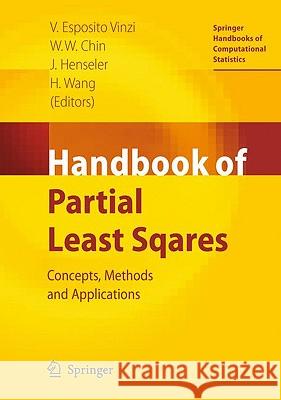Handbook of Partial Least Squares: Concepts, Methods and Applications » książka
Handbook of Partial Least Squares: Concepts, Methods and Applications
ISBN-13: 9783540328254 / Angielski / Twarda / 2010 / 798 str.
Partial Least Squares is a family of regression based methods designed for the an- ysis of high dimensional data in a low-structure environment. Its origin lies in the sixties, seventies and eighties of the previous century, when Herman O. A. Wold vigorously pursued the creation and construction of models and methods for the social sciences, where soft models and soft data were the rule rather than the exception, and where approaches strongly oriented at prediction would be of great value. Theauthorwasfortunatetowitnessthedevelopment rsthandforafewyears. Herman Wold suggested (in 1977) to write a PhD-thesis on LISREL versus PLS in the context of latent variable models, more speci cally of the basic design . I was invited to his research team at the Wharton School, Philadelphia, in the fall of 1977. Herman Wold also honoured me by serving on my PhD-committee as a distinguished and decisive member. The thesis was nished in 1981. While I moved into another direction (speci cation, estimation and statistical inference in the c- text of model uncertainty) PLS sprouted very fruitfully in many directions, not only as regards theoretical extensions and innovations (multilevel, nonlinear extensions et cetera) but also as regards applications, notably in chemometrics, marketing, and political sciences. The PLS regression oriented methodology became part of main stream statistical analysis, as can be gathered from references and discussions in important books and journals. See e. g. Hastie et al. (2001), or Stone and Brooks (1990), Frank and Friedman (1993), Tenenhauset al. (2005), there are manyothers."











